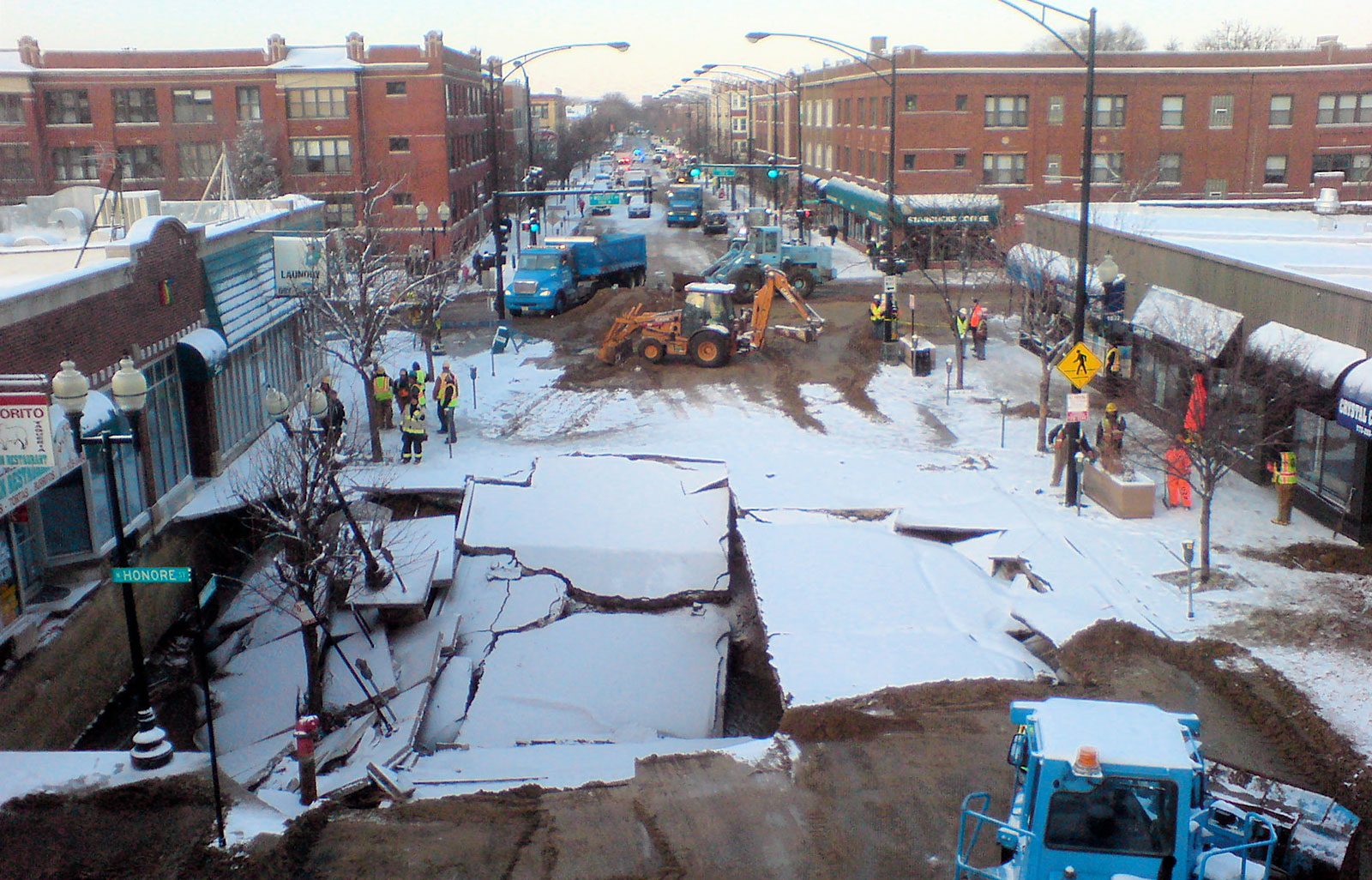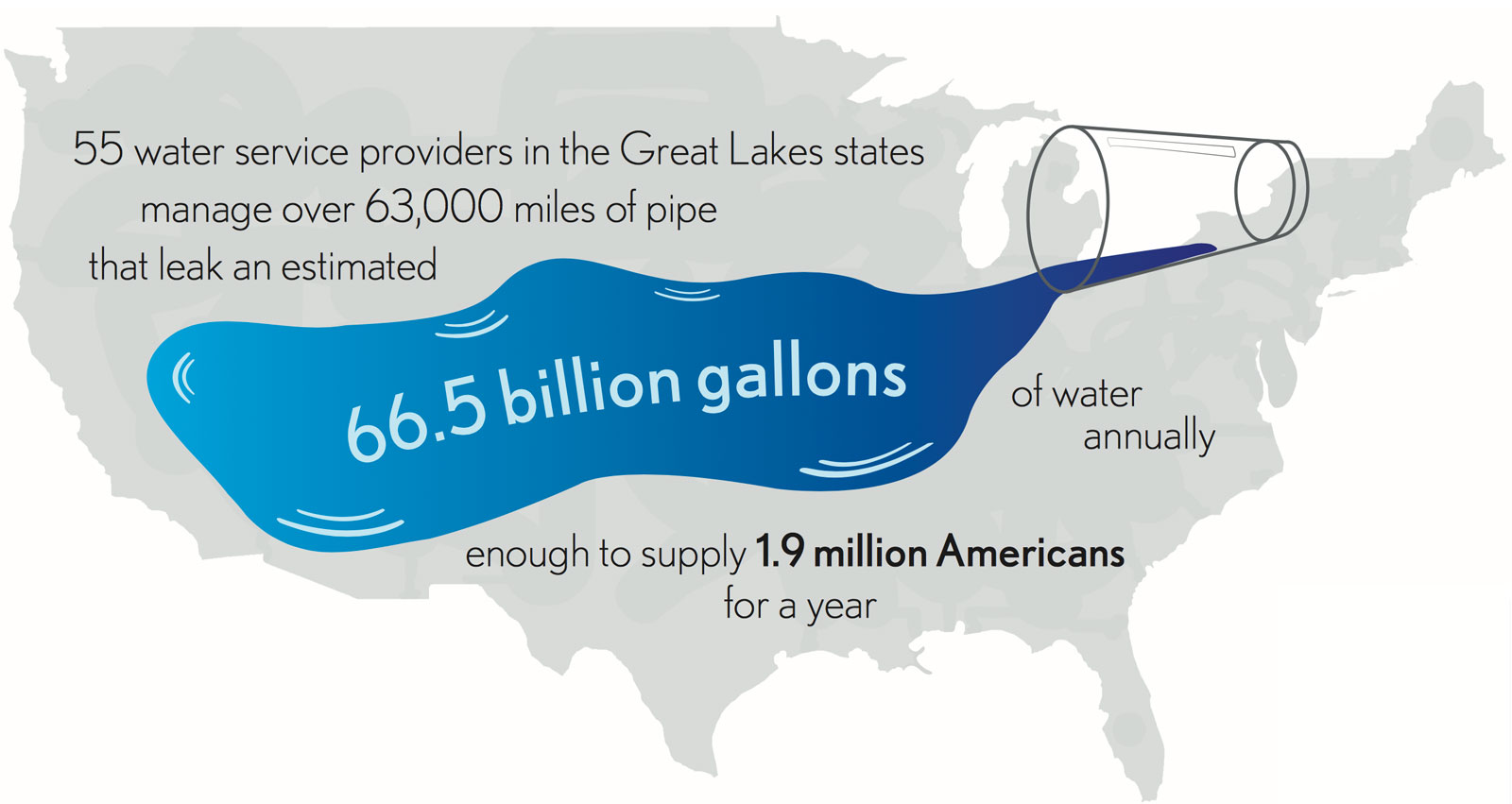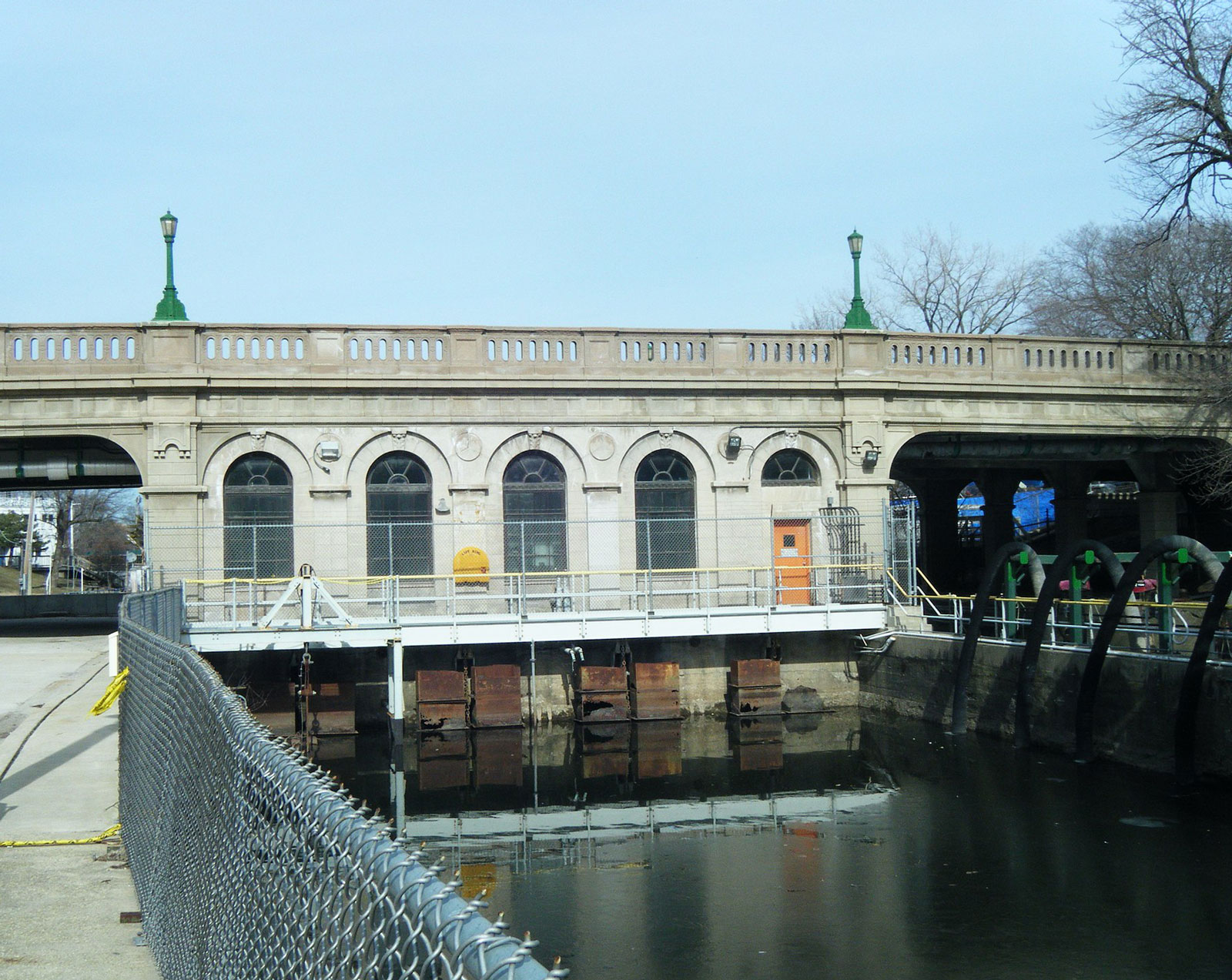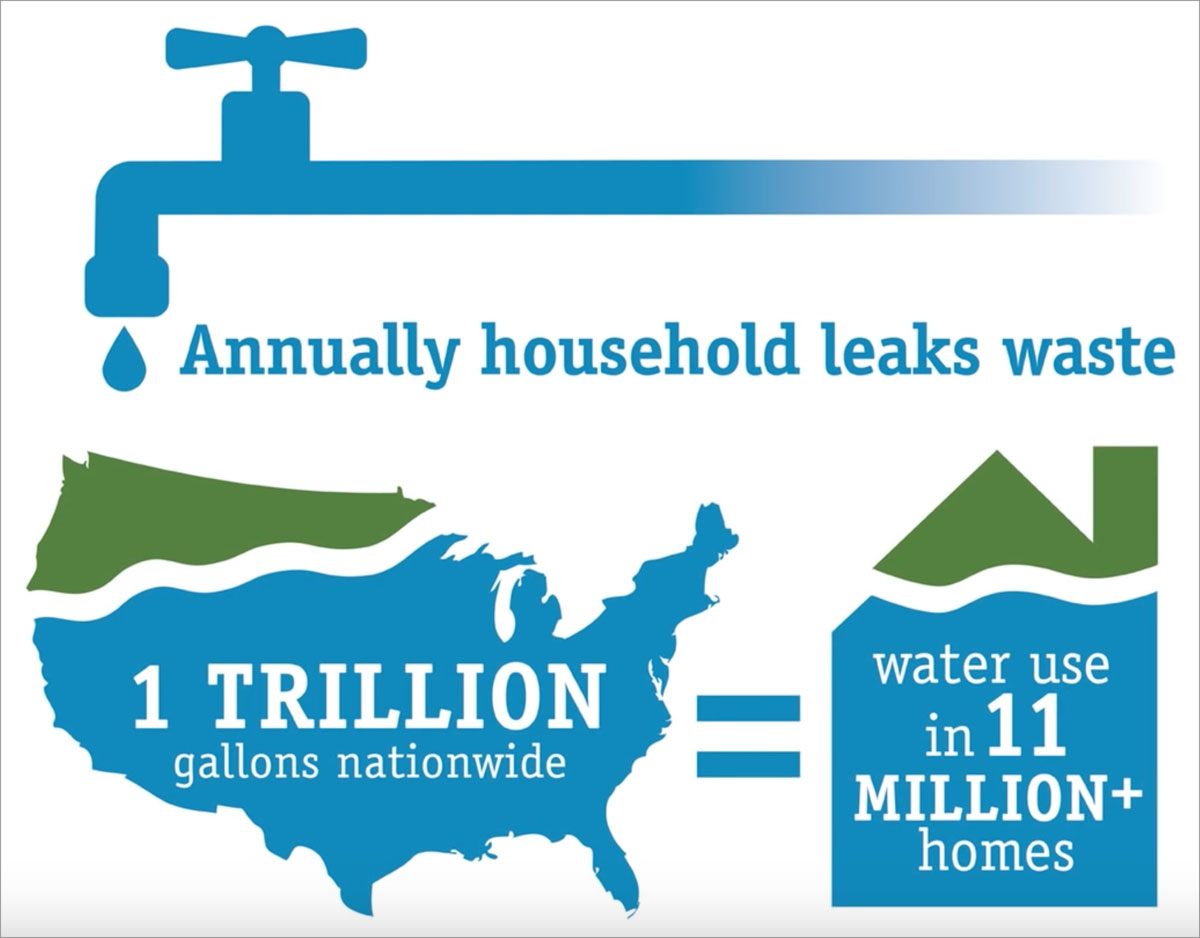How the Water Flows
The infrastructure that delivers and removes water for our everyday needs is a complex and often neglected system.
❖
By Danielle Gallet
6 min read
PIPES & INFRASTRUCTURE
Act Now
↓In need of water, we turn on faucets dozens of times a day. We often take for granted readily available water in our homes, businesses and schools.
Likewise, our used water is flushed and washed away without a second thought. But, how well are we maintaining these infrastructure systems that provide us with a critical, everyday service? What can we do to help ensure the systems we rely upon are appropriately invested in to keep us safe?
Out of sight, out of mind
Whenever we turn on a faucet, flush a toilet, run a dishwasher or laundry machine, we have tapped into a complex system containing miles and miles of pipes, powerful pumps and steps of purification at a treatment plant. All of this infrastructure was designed to collect, treat, store and deliver round-the-clock water to our homes, businesses and schools. It is an incredible service that we depend upon daily.
This infrastructure system is so vast that in North America alone we have more than 1 million miles of pipes beneath our feet and streets designed to provide us water every day. 1 million miles of pipe could wrap around planet Earth 40 times. That’s a lot of pipe to keep track of and maintain!
Yet our pipe network is buried out-of-sight, so it is also out-of-mind.
The network of pipes protects and maintains our way of life, yet it is aging and crumbling beneath our feet. Simply put, the massive investment our grandparents, great grandparents, and great, great grandparents made is coming to the end of its useful life. The job of reinvestment falls to us.

A water main broke, causing a massive sinkhole that destroyed the street and sidewalk along Montrose Ave. in Chicago, 2008. Photo: Ryan Pikkel
Practically speaking, it is difficult to know the condition of buried pipes. Some estimates suggest that drinking water systems are losing anywhere from 16 to 40 percent of their water due to crumbling pipes and old water meters. Our sewer and rainwater pipes are also old, often unable to handle the increased flow of wastewater and rainwater that we experience today.
Using — and losing — in America
An average American uses an estimated 88 gallons of water per day. Analysis of five regional entities across the U.S. found that about 1,132 gallons of water are lost per mile of water main each day. That’s more than 12 times the water actually used by Americans!
One recent study in the Great Lakes region found that fifty-five water service providers leak an estimated 66.5 billion gallons of water annually—that’s enough drinking water to meet the water needs of 1.9 million Americans for a year. What a waste!

Similarly, our old sewer systems lack the capacity to handle the amount of wastewater, rainwater and snowmelt that we see today. Many cities have combined sewer systems where rainfall mixes with the wastewater from homes and industries. Not only do combined systems treat precious rainwater like waste, but the heavy storms we experience today also result in these systems quickly overflowing and chronically flooding. Floods cause repeated, significant damage that impacts all of us and disrupts the delicate balance upon which our way of life depends.
What's at stake?
No one wants water infrastructure to fail.
Increasingly, we witness water pipes bursting and wreaking havoc on roads and buildings. In addition to safety concerns and emergency repair expenses, wasted drinking water also costs our communities money. These costs include labor, materials and energy. Water and energy are interdependent: it takes water to generate energy and energy to treat and deliver drinking water.

The Wilmette Pumping Station was designed to bring water from Lake Michigan into the North Shore Channel. Much of our energy is used to transport water.
In fact, drinking water systems and wastewater plants can account for up to one-third of a municipality’s total energy bill. As much as 40 percent of operating costs for drinking water systems go towards energy. A survey conducted by the Illinois Section of the American Water Works Association found that energy costs on average ranged between 8-15 percent of a drinking water utility’s operating budget, with the maximum reported at 38 percent. The failure to invest in our water service infrastructure not only wastes water, but it also wastes energy.
Valuing our infrastructure
Technologies exist today that allow utilities to better identify leaks, digitally map pipe networks and develop plans to replace deteriorating infrastructure. Accounting for the condition of our infrastructure is the first step in maintaining a viable, safe and healthy drinking water system. Investment is the second step.
Infrastructure does not exist by itself. It involves people: the people who build it, operate it, maintain it, finance it and ultimately use it. Behind a working water faucet is an actual person. Putting a human face to our drinking water infrastructure system helps make it more real, connects us to one another and helps remind us about the importance of it in our everyday lives—all 1 million miles of it.
What can we do?
It makes little sense to collect and treat water only to lose a high percentage on the way to our taps. Likewise, none of us wants flooded streets, homes and businesses. So what should we do to avoid water system failures?
→ Don’t Run Water When it Rains
Combined sewers mean that our water systems become inundated during rainfall. You can help the system to store and drain water by not adding to the flow. When it rains, hold off on using your washing machine, dishwasher, shower and even faucet.
→ Fix Your Leaks

Does your toilet run constantly? Do you have faucets that leak? Average household leaks can account for more than 10,000 gallons of water per year. By fixing your leaks you can also save yourself money on water bills. Any week can be fix a leak week.
→ Invest in Your Water Infrastructure
Local water utilities need to make appropriate investments in our water systems today. Just like our firefighters and police, utilities provide all of us with every day, critical needs. Ensuring our utilities are charging a fair and equitable rate in order to invest in and maintain our water systems is important.
 Freshwater Stories
Freshwater Stories